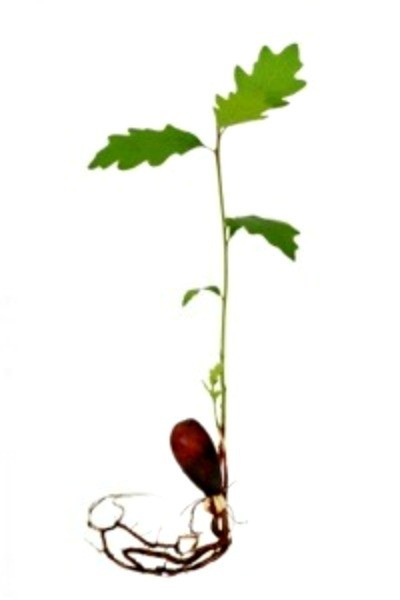Watching a tiny acorn grow into a towering, majestic oak is a rewarding experience for adults and children alike. It's easy, fun, and a great way to leave a legacy for future generations.
Before you set out to hunt for viable acorns, make sure that an oak tree is the right choice for your site. As a landscape specimen, oaks can quickly overwhelm a small space. Depending on how you like to keep yard and garden, some species may also require a lot of maintenance. They will continue to drop a lot of leaves, twigs, and acorns for hundreds of years into the future.
There are more than 80 species of oak trees in North America, but for the most part, they can be divided into two basic genera: White Oaks and Red (or Black) Oaks. (Each group contains several individual species so it's wise to consult with a local expert or use a guidebook if you want to determine the exact species.) Here are some basic characteristics of each group:
Examples from this group: white, bur, chinkapin, swamp white, and post oaks
Examples from this group: red, pin, black, Hills, blackjack and shingle oaks
The best time to collect acorns is right after they fall to the ground, usually late September to early November. Oaks are one of the last trees to shed their leaves, and often the acorns fall first. If the acorns are already buried under a lot of leaves, look under trees growing near driveways, parking lots, and sidewalks instead. Try to find at least 4-6 suitable acorns to cover an unexpected losses. Good candidates will be brown in color, appear slightly swollen, and have a "cap" (cupule) that detaches easily from the hull. Avoid green acorns, acorns still attached to the tree, and acorns with holes or cracks in their hulls.
The age when oak trees start to produce acorns varies according to each species, and may begin when the tree reaches 10-50 years old.Acorns are produced annually in the fall, but trees may turn out a very light crop, or even skip a year or two after a year of particularly heavy production.Acorns are an important source of food for wildlife, including insects, squirrels, mice, chipmunks, rabbits, deer, chickadees, and quail.Acorns contain tannins that in large quantities, are toxic to horses.
Acorns from the White Oak group mature in one season. They sometimes sprout in the fall, immediately after hitting the ground, and overwinter as seedlings. They can be planted in pots the same season you collect them (see below), or stored over winter in the refrigerator and planted later in the spring.
Acorns from the Red Oak group need to be exposed to a period of cold temperatures (between 32-35 F for 2-3 months) in order to germinate. To mimic winter, place them in a plastic bag filled with damp peat moss and stick them in the back of your refrigerator. Pot them up in late February or early April.
Starting acorns in pots is easy. Fill a 6 inch pot with good quality potting soil. Place 3-4 acorns on their sides along the edges of the pot and barely cover them with soil. Dampen the soil slightly and place the pot on a southern facing windowsill. The soil needs to be kept damp, and should never be allowed to completely dry out. In a few weeks, you should see sprouts. At this point the seedlings should be moved into individual pots. Once they grow 4-5 inches tall, start to harden them off by exposing them to the outdoors for increasingly longer periods or time (about mid-May). Dig a hole 1 foot wide and 1 foot deep. Plant the seedlings in their permanent homes, making sure they sit up slightly higher then they did in their individual pots.
Instead of a windowsill, you can also put your pot of newly planted acorns directly outside in the garden. Exposing the pot to the elements is fine, as long as the acorns remain protected from hungry critters. Simply cover the tops of the pots with 1/2 inch of compost and leave them alone. Check back in mid to late spring for emerging sprouts. Transfer them into individual pots, and into their permanent locations when they reach 4-5 inches tall.

About The Author: Ellen Brown is an environmental writer and photographer and the owner of Sustainable Media, an environmental media company that specializes in helping businesses and organizations promote eco-friendly products and services.
Add your voice! Click below to comment. ThriftyFun is powered by your wisdom!